Rabbits are adorable yet delicate little creatures and they require special attention and care. That’s why the primary focus in the care and safety of your rabbit(s) should be the rabbit housing or rabbit cage. In this guide, we’ll explore different types of rabbit cages and help you choose the right one for your fluffy, long-eared friends. Read on!
Bad choice of rabbit cages is one of the leading causes of poor health among rabbits as it can affect their growth and behavioral patterns. In extreme cases, it can lead to death.
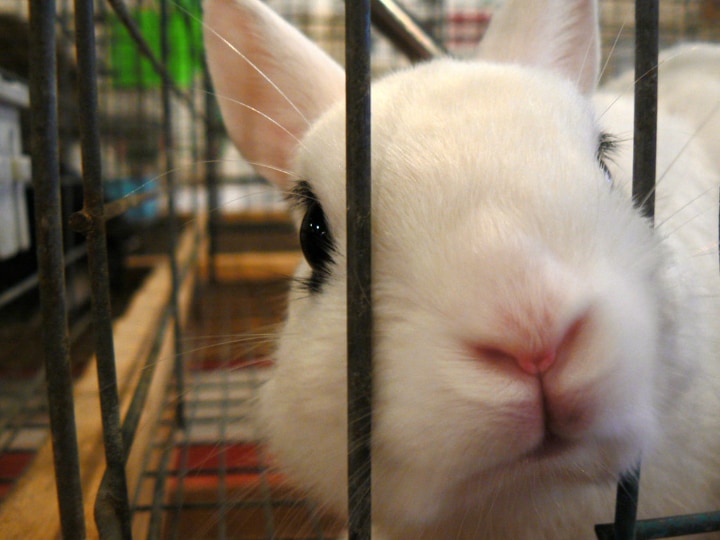
“Cage” may sound like a hard word, but remember that what you’re providing for your rabbits is essentially housing. In most cases, it’s best for them to have their own sheltered space where other pets can’t reach them.
What Is a Rabbit Cage?
A rabbit cage is a form of housing for rabbits, either temporal or permanent. It is primarily made up of wire meshes connected with other sturdy materials, or completely of wire meshes.
In an all wire mesh cage, the sides, the floors, and the top of the cage are all made with wire mesh.
Rabbit cages made only of wire mesh are often used as an indoor housing type for rabbits.
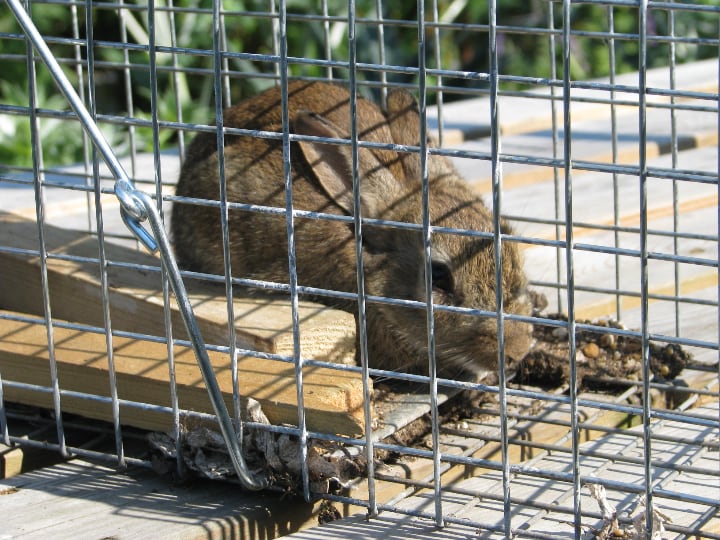
Where they are used as an outdoor hosing, an external solid material is placed at different sides of the cage to offer the rabbit shade and privacy.
When you choose to house your rabbits, rabbit cages are not the only options; rabbits hutches, rabbit pens, rabbit runs are all other forms of housing.
Rabbit Hutches
In comparison to rabbit cages, rabbit hutches are mostly outdoor as they are bigger and more enclosed.
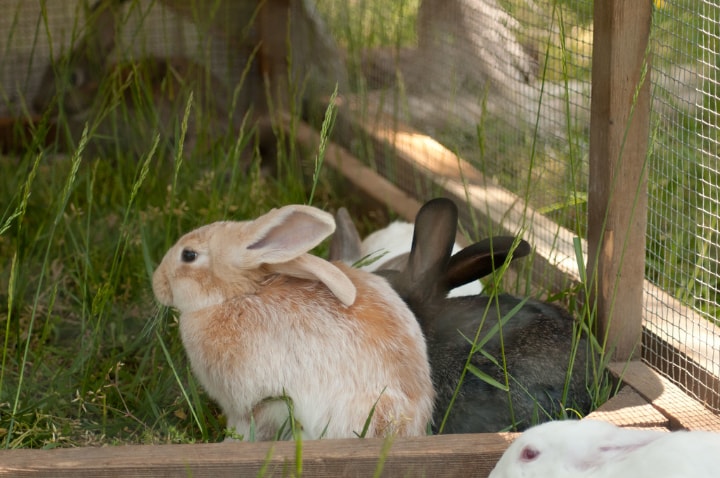
Rabbit hutches are often made from wood, or other sturdy materials, but rarely metals, and provide an addition of wire meshes to give the rabbit a view of its surroundings.
Rabbit Pens
This is a large partitioned area, built with the basic needs of the rabbits, and has enough space for them to stretch and play around.
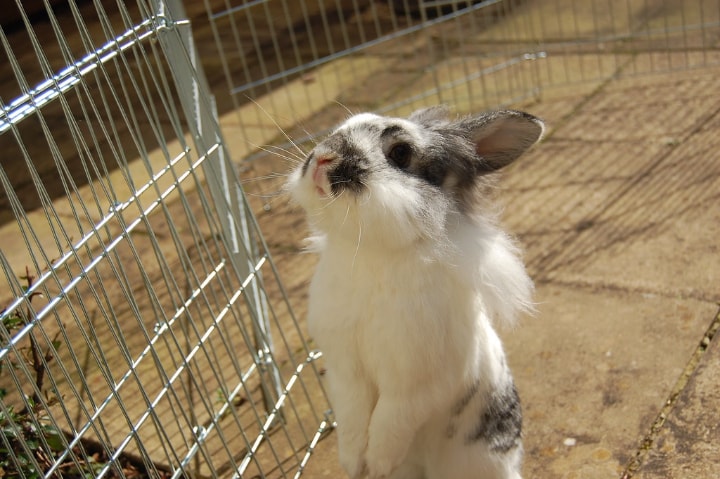
A rabbit pen can either be indoor or outdoor and it affords the rabbit more play-area when compared to other housing forms.
Rabbit Run
A Rabbit Run is an enclosed area (often mobile) with space for your rabbit to play and move about. It’s used where you want to control the area where your rabbit plays.
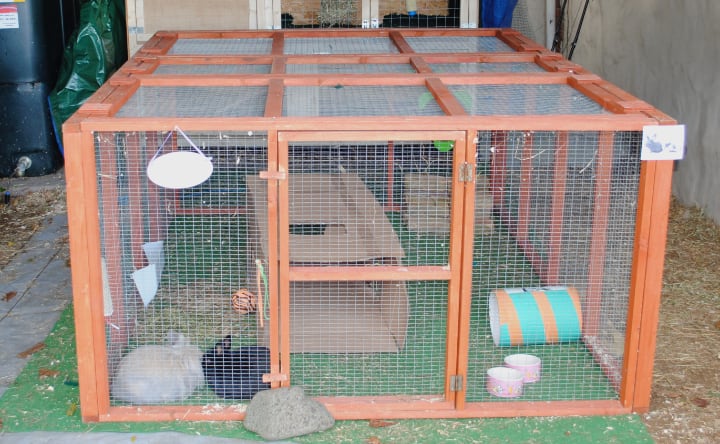
A rabbit run consists of various toys and “fun-mazes”. Rabbit runs are built high (for open-top mazes) to allow your rabbit hop and play without jumping out.
Benefits of a Rabbit Cage
Whether you’re keeping the rabbit as a pet or not, a cage can be a very effective means of housing your rabbits as it helps you properly observe and care for them.
A rabbit cage is not only beneficial to your household, but also the health of the rabbit. Let’s sum up the key benefits of a rabbit cage.
Prevent Destruction
You don’t want to come back home only to discover your rabbit has chewed on all wires, wood, boxes, or other materials. Or your flowers.
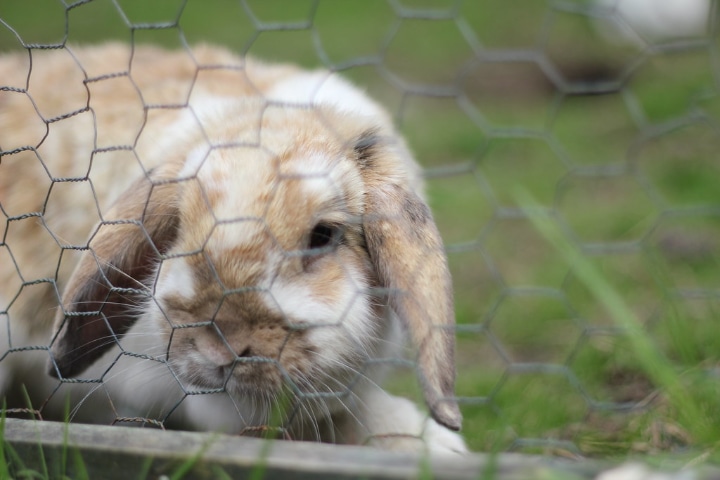
Rabbits chew a lot and will chew on almost anything if they’re left unguarded. The complex nature of their teeth, which keep on growing all the time, means they always have the urge to chew, even the wrong things.
See Your Rabbit Whenever You Want
A rabbit cage allows you to easily observe your rabbits and notice changes in their habits. This can be useful in detecting when your rabbit is sick or in need of special care.
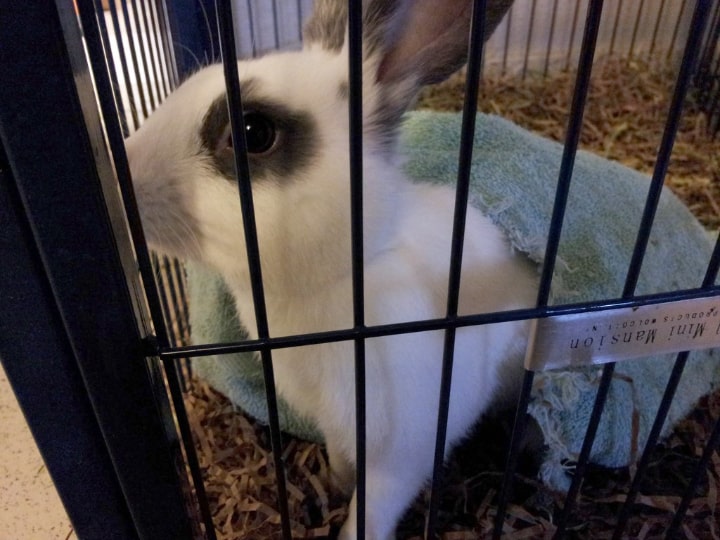
Also, if you keep your rabbit as a pet, a cage is best for you in terms of mobility with your rabbit, that is, picking up or playing with your rabbit.
Easier Maintenance
A rabbit cage does not come with the rigors and stress associated with other housing forms. Cleaning and maintaining a rabbit cage is far easier than other forms of rabbit housing.
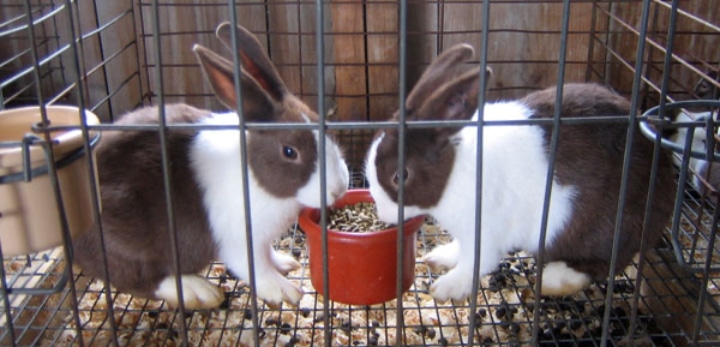
Tip: With a complete wire mesh rabbit cage, you can collect rabbit droppings and dumps in a can or bucket below.
Control Colonization
Rabbits are very fertile animals, and in two years, two mature rabbits (a doe and a buck) could spawn over a thousand descendants (!).
Keeping rabbits as pets could be a little daunting, but if you are unprepared, it can all become unmanageable. So, if you choose to keep rabbits as pets, you should be sure of the number of rabbits you can cater to.
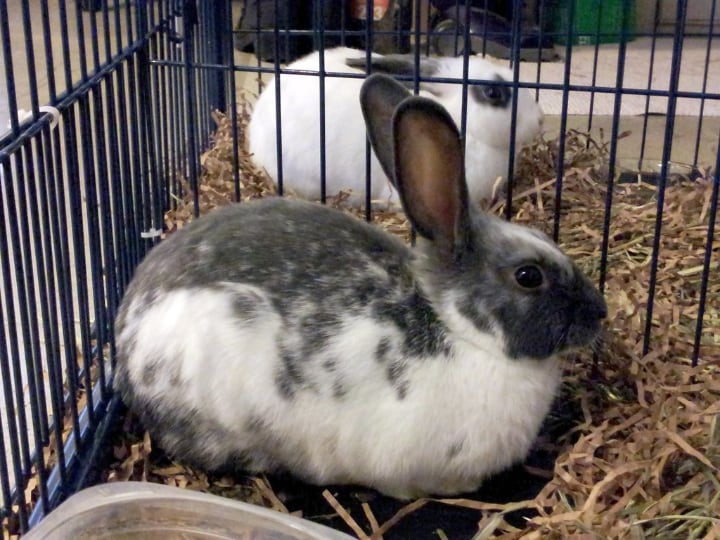
The bottom line: A rabbit cage would come in handy in controlling your rabbit population.
Prevents Rabbits Battles and Bullying
Research shows that rabbits live in intricate communal structures, and dominant Doe(s) or Buck(s) would usually bully the weaker ones during feeding, or mating.
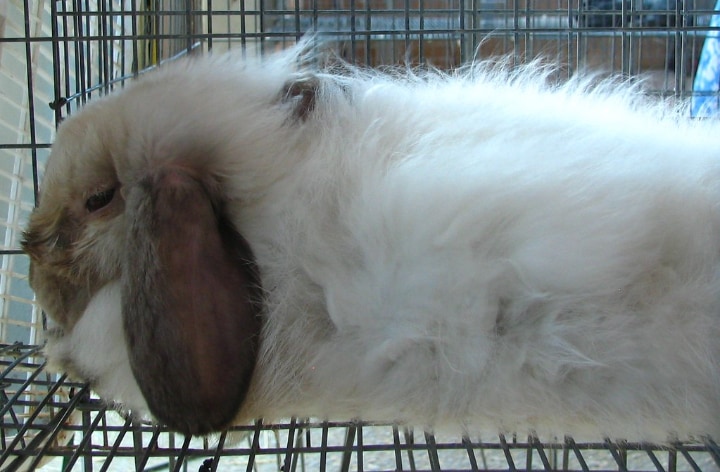
These complex structures could create adverse effects on the health of your rabbits, especially if you rear them for food. Rabbit cages will allow you to seclude agreeable Doe(s) and Buck(s) to the same cages.
Types of Rabbit Cages
There are several types of rabbit cages with different properties and merits, and they’re used for various purposes, locations, and seasons. It’s important to know a bit about them before shopping for one.
Indoor Rabbit Cages
As the name suggests, these types of rabbit cages are designed to help you keep your rabbits indoors. They are constructed from materials like plastic, wire, or metal.
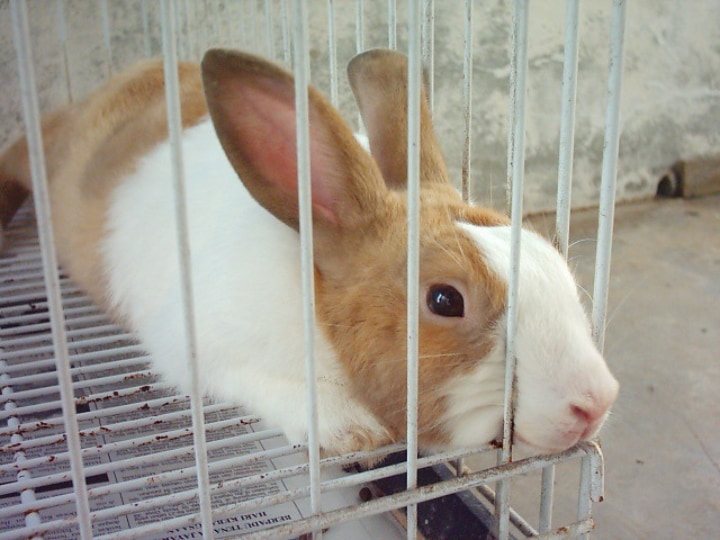
Indoor rabbit cages are often temporal, usually portable, and take less space within the house.
Using an indoor rabbit cage helps you keep your rabbit from areas that are not bunny-proof in your house, including indoor gardens.
Outdoor Rabbit Cages
Outdoor rabbit cages are similar to indoor rabbit cages, only that they are bigger and can contain more ‘toys’ and bigger cage items.
An outdoor cage is suitable when you have lots of rabbits or want to reduce the stress an indoor cage would create for you.
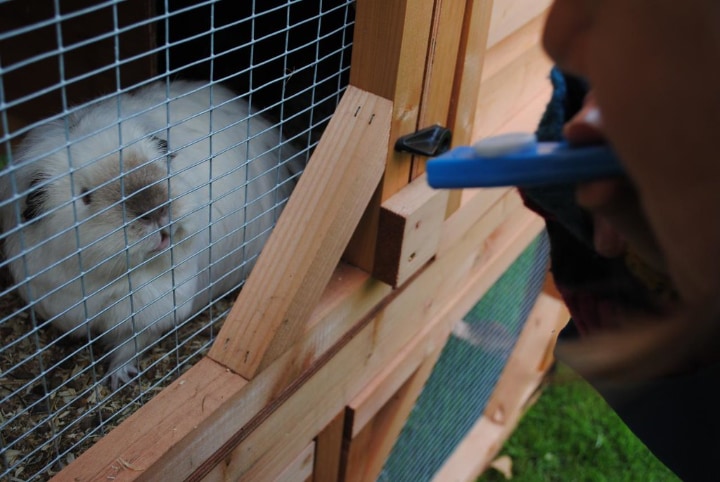
Though, an outdoor rabbit cage has to be well protected from extreme weather conditions.
Good to know: Outdoor rabbit cages are usually made of wire together with other materials (poor heat conduction) like wood and plastics.
Metal Rabbit Cages
Metal rabbit cages have metals like iron, aluminum, etc. at the base of the bars. These cages can be a good choice for your rabbit because the metal at the base cannot be easily burrowed or chewed by guess who.
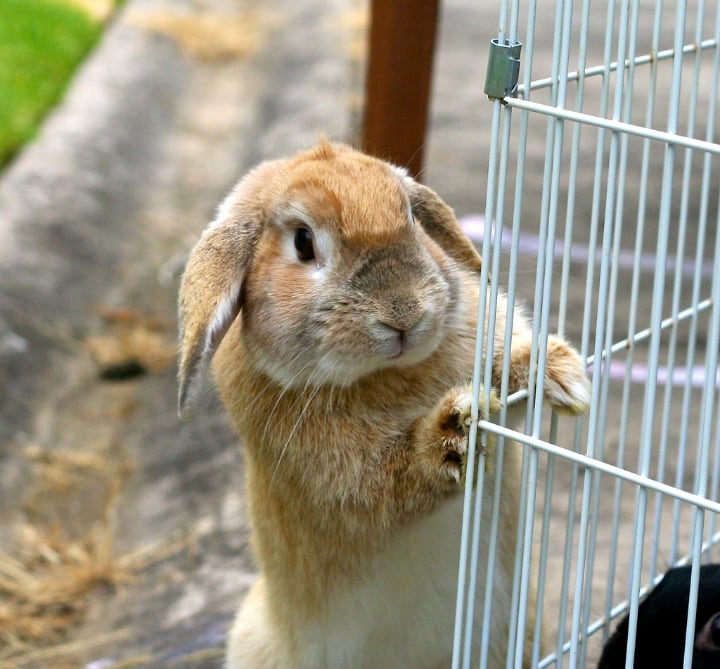
Good to know: Metal cages can easily dispel heat to the surroundings through conduction, which makes them good for indoor housing.
Stackable Rabbit Cages
You can call them the “condos” for rabbits, or more commonly multi-layer cages. Stackable rabbit cages contain two or more independent layers that are placed on top of each other in a unit cage.
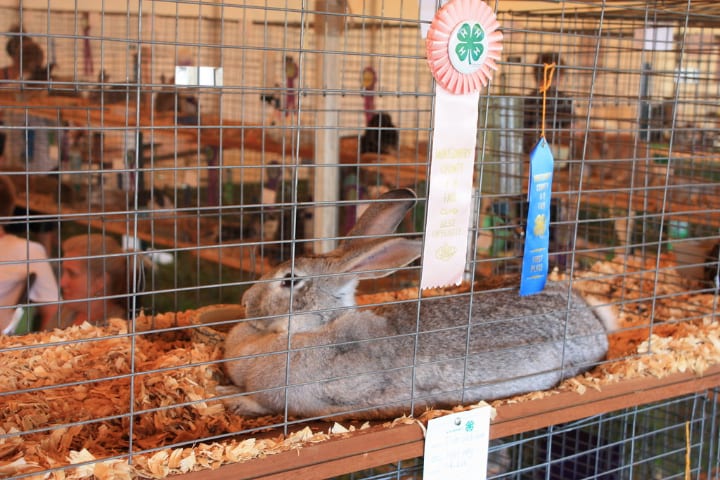
Each of these layers is connected with a ramp. These layers can function as separate housing areas and serve as an extended play area for the rabbits.
Tip: If you need to save up garden space, try some garden storage ideas.
Folding Rabbit Cages
These are mostly temporal rabbit cages. They are constructed using metal clips or screws (never welded permanently) to hold bars or wire meshes and other materials—like plastic, and wood—together to make a temporal cage.
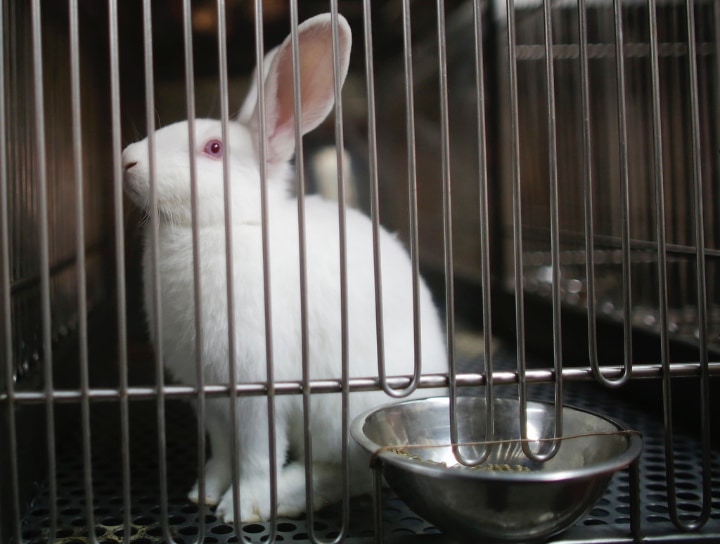
A folding rabbit cage is very mobile and easily detachable. Often, you can use it both indoor and outdoors.
Wooden Rabbit Cages
A wooden rabbit cage has wood as the base and support structure of the cage with wire meshes attached to it.
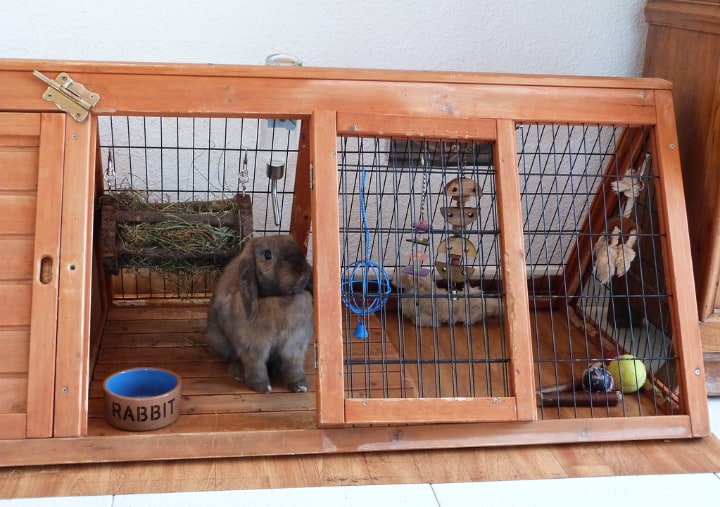
Wood is a strong material that can be reliable used for building a cage for your rabbit colonies. In the case of outdoor models, wood material offers shade and privacy to your rabbit cage.
Also, wood has good thermal properties, which means it does not heat up quickly like metals, and it stores a good amount of heat during cold weather.
Tip: A wooden rabbit cage is one of the best cages for your bunnies, although there is the risk that rabbits may chew on the wood.
Plastic Rabbit Cages
These types of cages use detachable plastic material as the support structure and base of the cage. They make for a convenient and pretty durable housing for your rabbits.

Plastic rabbit cages are generally lighter and mobile. They are poor heat conductors and are not subject to rapid temperature changes.
Good to know: Plastics used in rabbit cages are often recyclable.
Wire Rabbit Cages
These rabbit cages use of wire meshes; drawn, bent, and connected to form a triangular, circular, or rectangular enclosure.
Wire rabbit cages are fun cages for rabbits as they offer you a full view of your rabbit while your rabbit too can view its immediate surroundings.
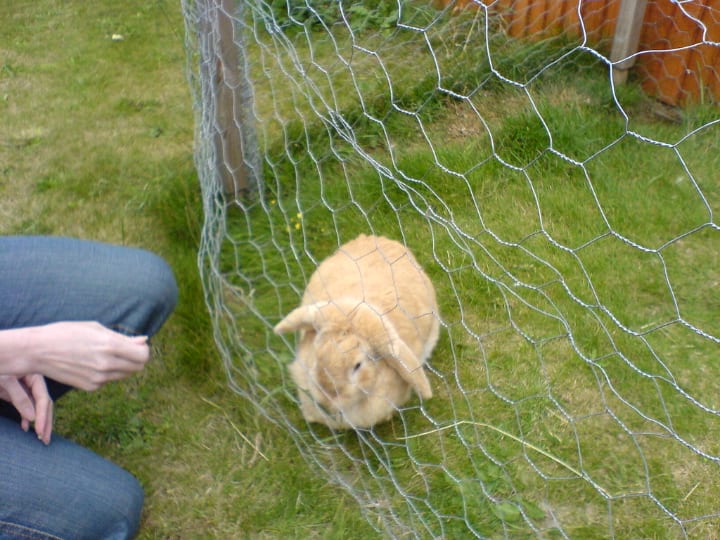
Wire rabbit cages can be made for both indoor and outdoor use, and whichever one you choose, you can create a good shelter for your rabbits.
Rabbit Cage DIY Guide for Beginners
Before you buy your rabbit(s), you want to get a suitable rabbit cage. You can either buy it or build your own. Building your own rabbit cage is not rocket science.
We put up a quick guide to walk through the key steps.
Step 1 – Pick the Right Size
When building a cage, keep in mind that your kit/young rabbit will grow over the next few months.
Important: Rabbits have a fast growth cycle and can triple their size and weight in just as little as 4 months.
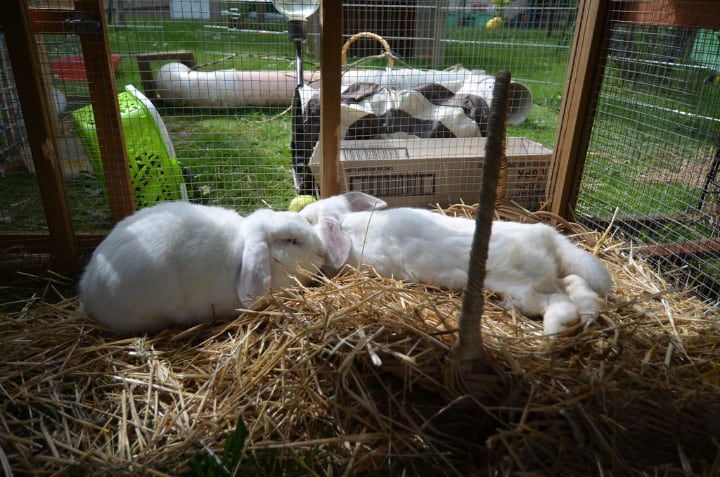
Also, your cage should be able to accommodate your rabbit properly. It should be higher than the height of your bunny when it stands on its hind feet.
Also, it should be longer than the length of three rabbit hops (not joking!).
As a general rule, the average size of the cage for rabbits less than 6 pounds should be at least 24 X 36 inches, and 30 X 36 inches for rabbits over 6 pounds.
The bottom line: Build a cage with the near future in sight.
Step 2 – Use Wire Mesh
Your rabbit needs plenty of air and little heat because of its thick furs. This makes wire mesh a useful material to use. Also, cages made up of wire mesh are usually easier to clean and maintain.
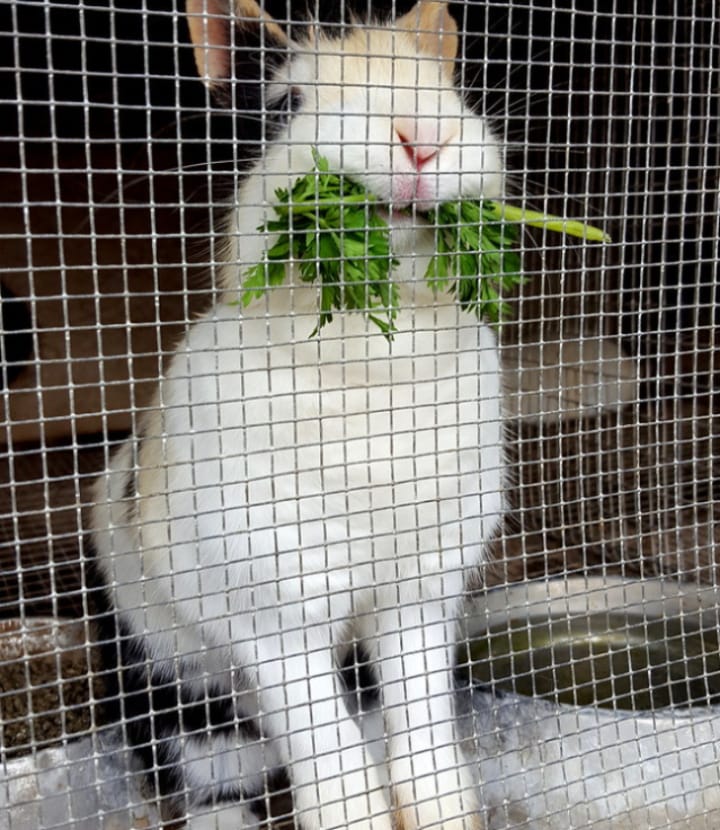
Tip: Opt for an open top. This will make the rabbit feel less confined in its cage and allow it to jump around.
Step 3 – Give the Cage a Solid Foundation
Use a flat board made up of plastic, aluminum, or wood as the base of the cage. Rabbits’ feet are not suited to standing on wire meshes for long periods.
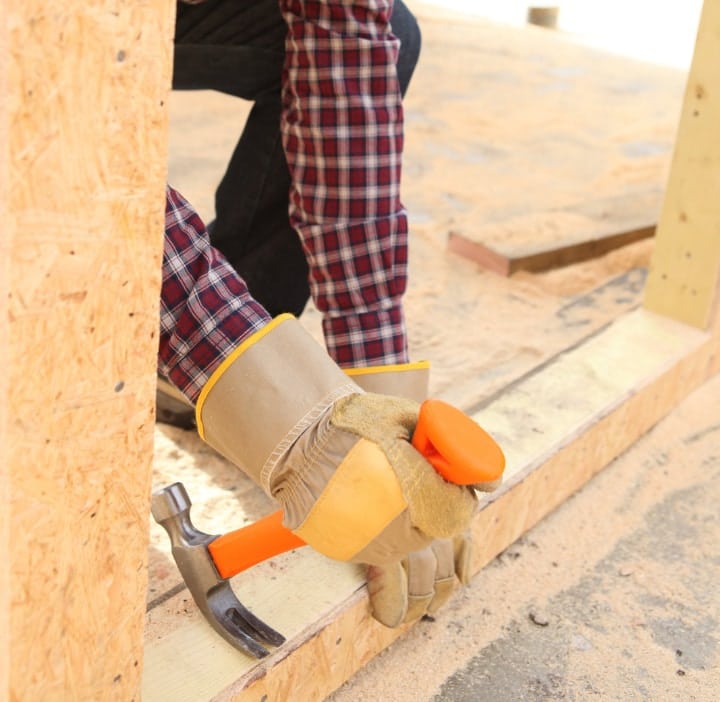
Using only wire mesh in building a cage can injure your rabbits’ feet. So, place a flat board or a nest to cover the whole base or a part of the base of the cage where the rabbit can rest.
Step 4 – Install a Urine Guard in the Cage
Rabbits tend to spray when urinating. The urine guard will help contain the rabbit urine to one corner of the cage.
This will help prevent the cage from being messy and dirty. You can make a urine guard from cardboard or plastic.
Step 5 – Add a Litter Box
Rabbits have compound digestive systems and would normally ingest a meal about two times before final digestion.
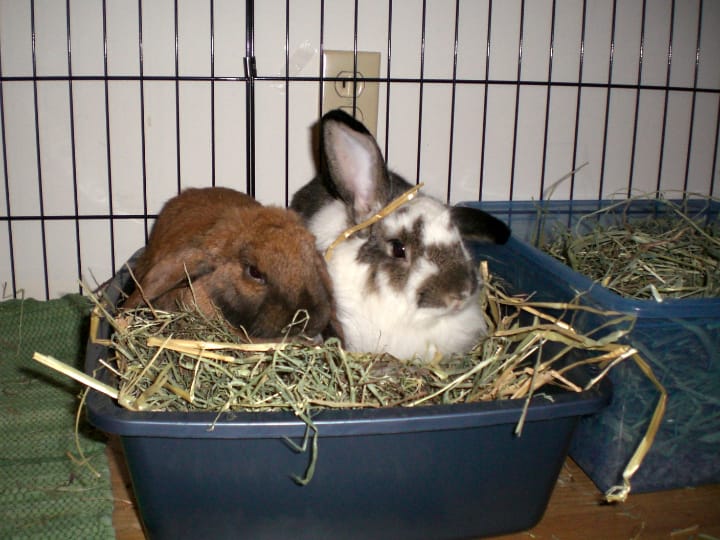
A litter box would help keep the initial discharges together, so your rabbits can go back to re-ingest them for further digestion.
Step 6 – Provide Food and Water Bowls in the Cage
Secure or fasten the eating bowls for foods and drinking pans to the rabbit cage, to prevent them from turning over when the rabbits run around. Also, you should provide the cage with hay racks to reduce the wastage.
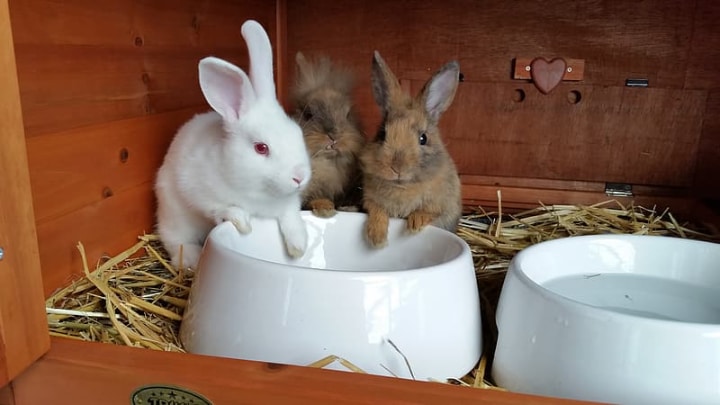
Check out the video below for more inspiration on building your own DIY rabbit cage.
Where to Put a Rabbit Cage?
The position of your rabbit cage is vital for the health and growth of your rabbit, whether the cage is indoors or outdoors.
Important: Put your rabbit cage in well-ventilated areas that are immune to sudden changes in temperatures.
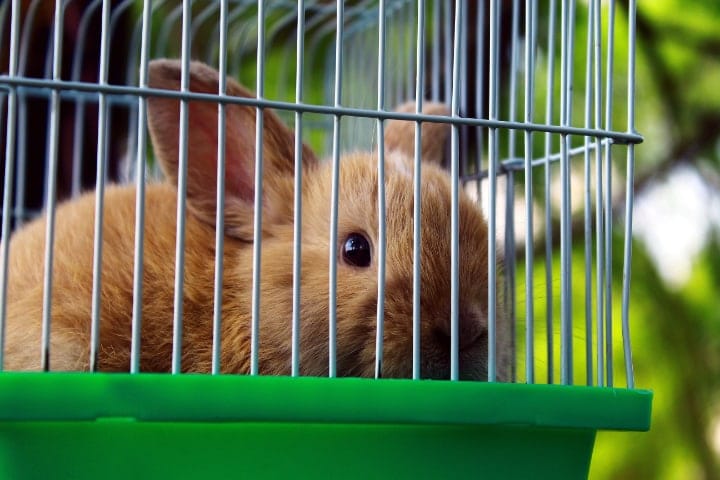
Here are some tips to help with that:
- Place the rabbit cage in an area that is not stuffy and receives a good amount of airflow. Rabbits have very delicate organs, and the accumulation of dust in their lungs is dangerous to their health.
- Place your rabbit cage out of direct sunlight, as this can heat their cage and increase their body temperatures.

- If you keep your rabbits indoors, a spare room or an open partitioned space would be suitable. Never keep your rabbit in the attic or basement.
- Keep your rabbits out of reach of predators or other animals. Rabbits become tensed also when they sense the presence of other animals or sudden noises. High places or secluded areas are proper positions.
- Your rabbits shouldn’t be confined to their cages all the time. Provide a room or area where they can exercise and roam freely.
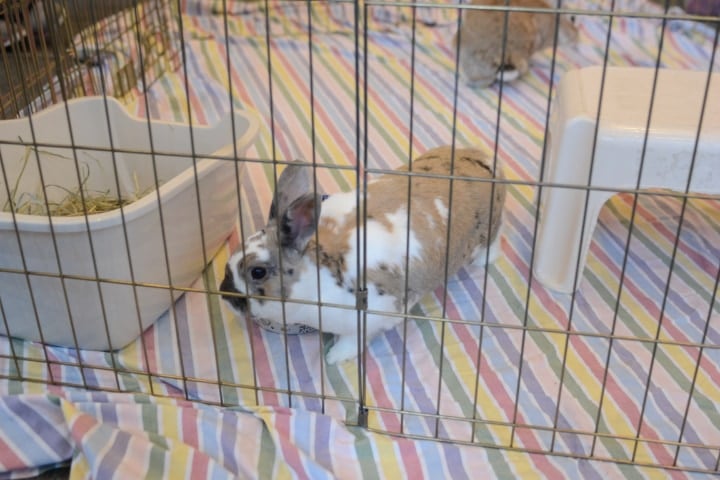
Important: The room your place your rabbit cage in should be free from any chemicals (paint, gum, wash), sharp objects, or electric wires/cables, etc. to prevent injury.
How to Set Up a Rabbit Cage
After you have built your cage and put in the necessary accessories, the next step is setting your cage up. There are a few things you want to remember.
Put Sufficient Beddings at the Base of the Cage
Make sure to line the base of the cage with heaps of hay, straw, or hay, although straw is more commonly used.
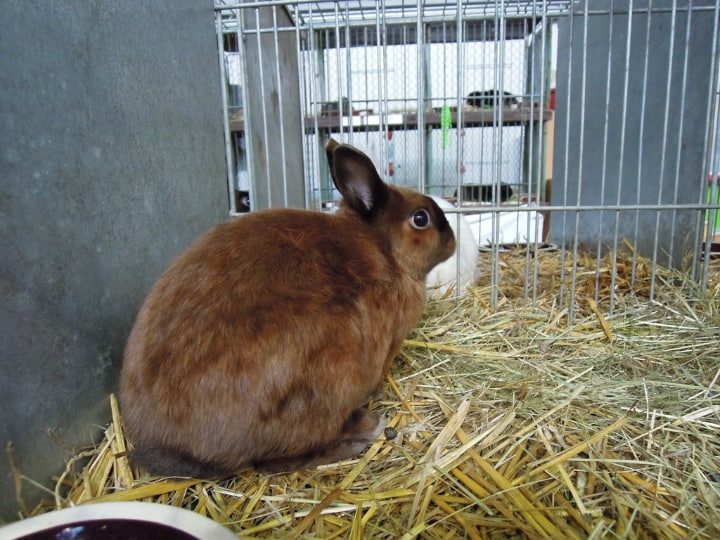
Rabbits will likely chew their beddings and blankets, so it’s important to use a material harmless to the rabbit. Also, the material should be soft on their feet and be able to hold heat during colder seasons.
Tip: Do not line the base of the cage with materials like carpet or other soft ingestible materials, as this could cause bowel obstruction to the rabbit’s digestive tracts.
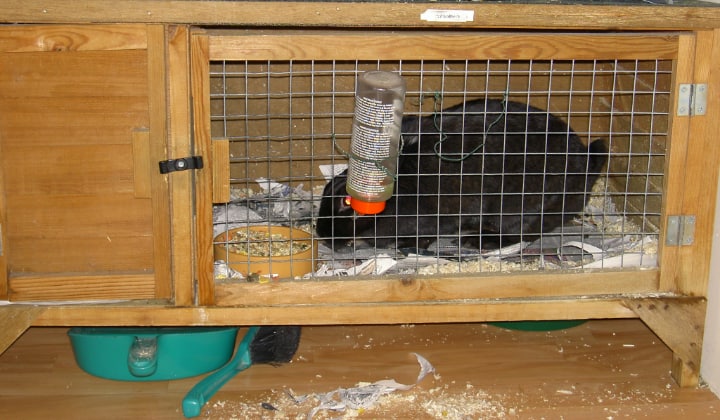
And don’t forget that choosing the right rabbit food will keep the little fellows occupied and dissuade them from gnawing their cage.
Prepare the Litter Box
It’s easier to clean the litter box if you cover it with disposable materials like newspapers and hay.
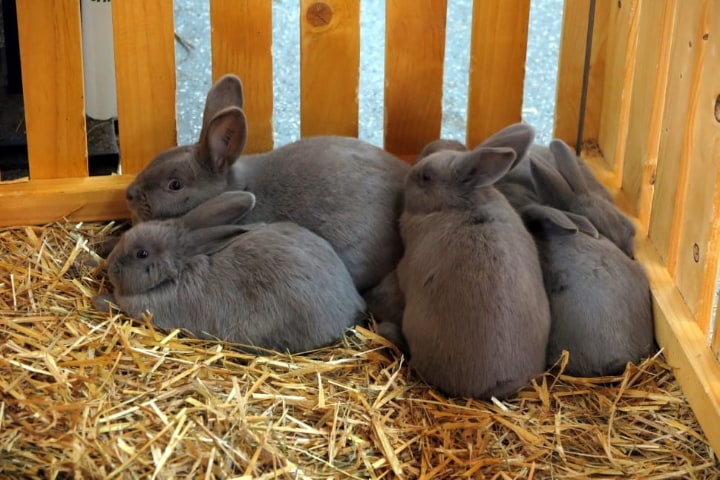
- Firstly, place a layer of newspaper at the base of the litter. This helps to absorb any liquid in the litter box.
- Put an appropriate non-toxic litter (preferably rabbit litter) over the newspaper. Litter from other animals could be toxic to your bunny.
- Finally, finish it with another layer of hay/straw on top as this poses no issue to the rabbit’s health if ingested.
Food and Water Bowls
The bowl you use shouldn’t be too deep or too light in weight.
Water is best provided through sippers, to prevent the water from being soiled by pellets or being tipped over.
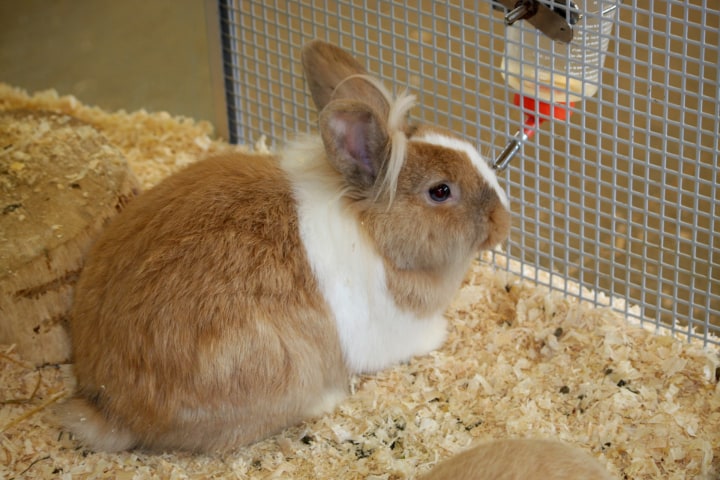
You should also provide toys and other fun items in the cage to keep your rabbit ‘busy’. Also, make sure the toys are safe for your bunny. Remember, bunnies like to chew!
Rabbit Cages for Sale: Buyer’s Guide
When shopping for a rabbit cage, the primary concern should be your rabbit’s health. The rabbit cage should be comfortable and hygienic for your rabbit.
Most points that were given above in building a suitable rabbit cage remain valid. However, there are a few other criteria to take note of.
Features
The features of the cage involve the materials, the equipment present in the cage, and how the cage is modeled.
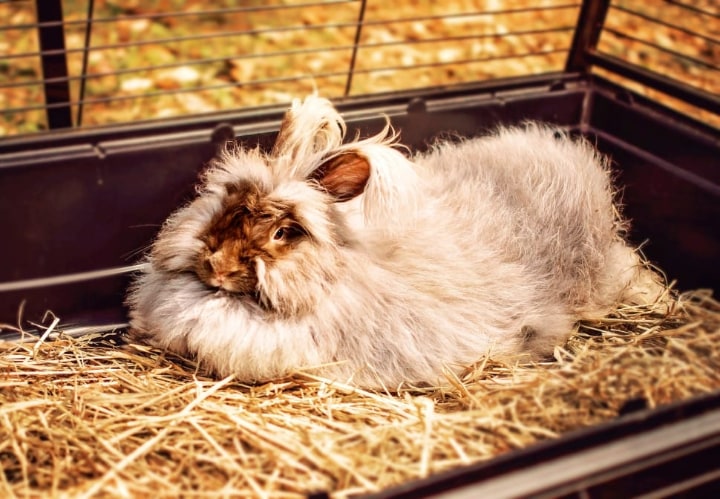
Keep in mind that you’ll have to regularly clean and maintain the cage. That’s why you may want to get a cage that’s made of wire mesh, with a detachable base made of plastic or metal as it’s easier to wash than wood.
Materials
There are various materials used in building cages and they have their different properties in terms of thermal, structural, or aesthetic features.
Wooden cages are very important for outdoor purposes due to their suitable thermal properties.
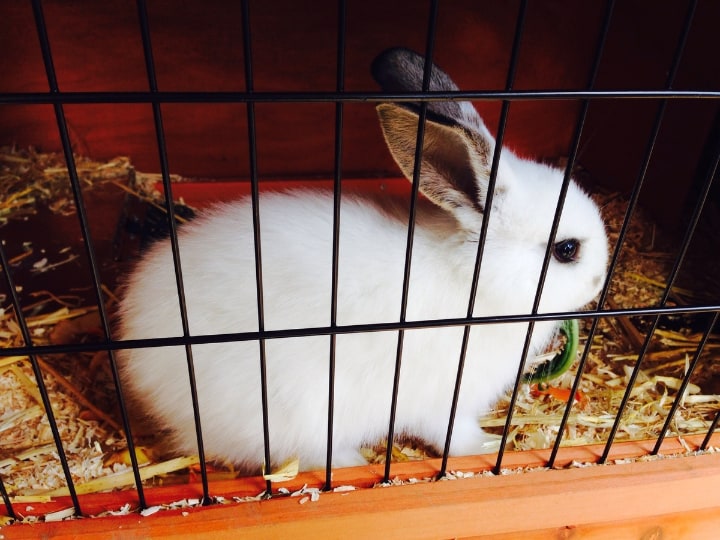
If you’re going to place your rabbit cage indoors, plastic cages and metal cages can look nice and blend in with the design of your house.
Tip: Metal cages conduct heat faster than any other material and are better suited for indoor use. Nonetheless, they are strong and un-ingestible by the rabbits.
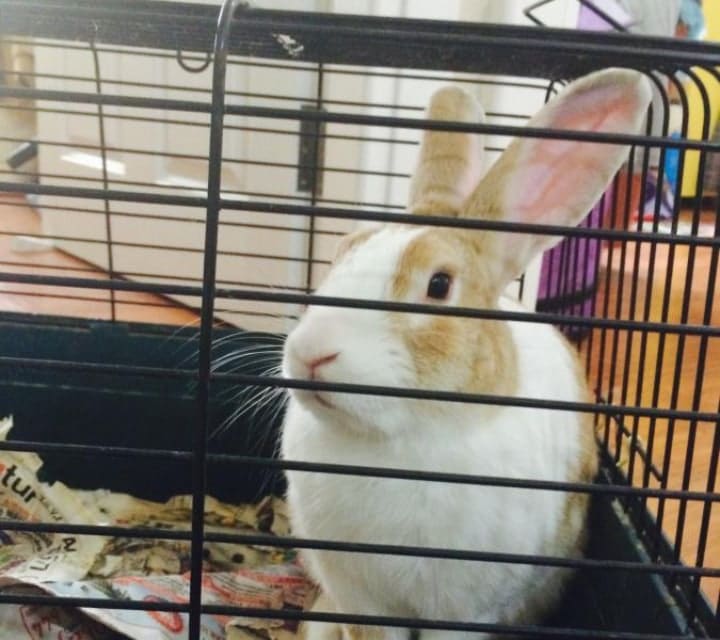
Plastics can come in different beautiful designs and shapes and can be lighter and more affordable. But unless you’re getting a good-quality, durable plastic, it may not last long.
Size
Your rabbits will grow fast, so it’s better to buy a cage with the future in sight.
Tip: As an unwritten rule, the cage should be long enough to contain three bunny hops and wide enough to contain two bunny-hops.
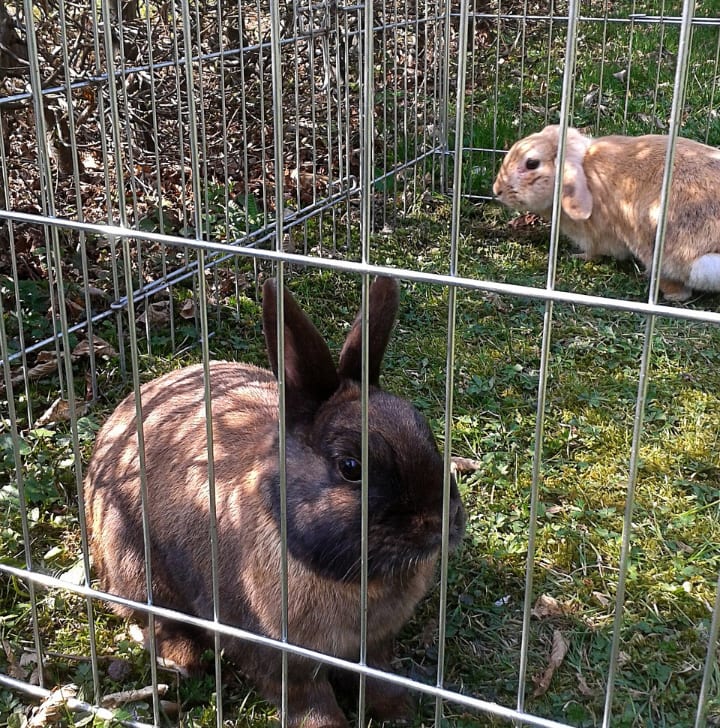
Space is crucial. Your rabbit should not feel confined in its cage as this can lead to problems like sudden weight gain and even death.
Type
This is determined by where you want your rabbits to be, and if you raise your rabbits as pets or not.
If you’re growing many rabbits, using stackable outdoor cages can be more economical.
But if you keep a few rabbits as pets, you should purchase a simple temporal indoor cage with basic features.
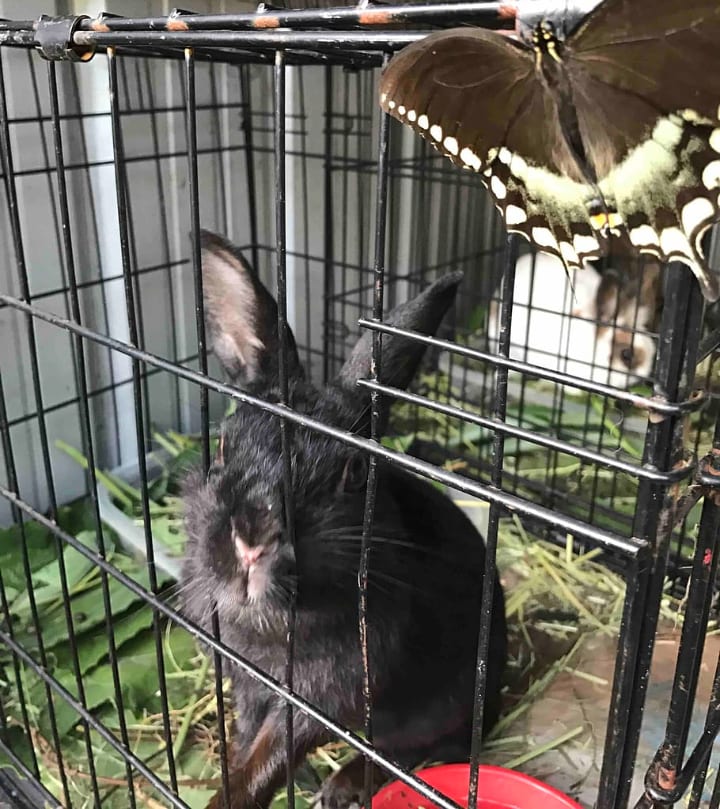
Folding cages can also come in handy if you are not thinking of permanent housing for your rabbit. And if it will be running around the house a lot.
Our Recommendations
Now that you know what to look for in a rabbit cage, here are some of the best rabbit cages you can get right now.
Rabbit Cage Commonly Asked Questions
We hear a lot of questions related to rabbit cages and the things that go in them. To help you make the best choice, here are our answers.
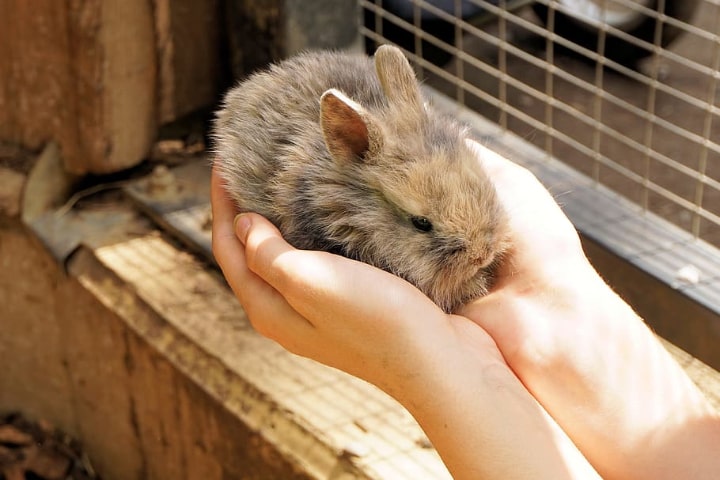
What is the best cage for a rabbit?
The best cage for a rabbit is a cage made of wire mesh, with an open roof, and a base of a solid material. This type of cage allows the rabbit to see its surroundings, receive proper ventilation and light, and allows you easy access to your rabbit.
What does a rabbit need in its cage?
As a general rule, a rabbit needs enough room to be able to twist, turn, and make some basic movements. A rabbit cage should be long enough to contain “3-bunny-hops” and high enough to contain the rabbit when it is on its hind feet. Learn more about how to set up a rabbit cage.
How much room does a rabbit need in a cage?
As a general rule, a rabbit needs enough room to be able to twist, turn, and make some basic movements. A rabbit cage should be long enough to contain “3-bunny-hops” and high enough to contain the rabbit when it is on its hind feet. Read more about the benefits of a rabbit cage.
Where should I put my rabbit cage?
You can place your rabbit cage indoors or outdoors. Either way, the area should be well aerated, sheltered from sunlight, and out of sight from predators. Indoors, spare rooms in the house, or a partition of a room can be a nice place to put your rabbit’s cage.
Rabbit Life Beyond the Cage
While a cage might be a natural solution to ensuring the safety of your rabbit, you should also let your rabbit explore your garden or house for a few hours during the day.
It’s also important to establish a bond with your rabbit (if you have one rabbit) or get a companion for it. This way, your rabbit can stay mentally agile and happy.
Knowing your rabbit breed’s requirements and will make everything easier.
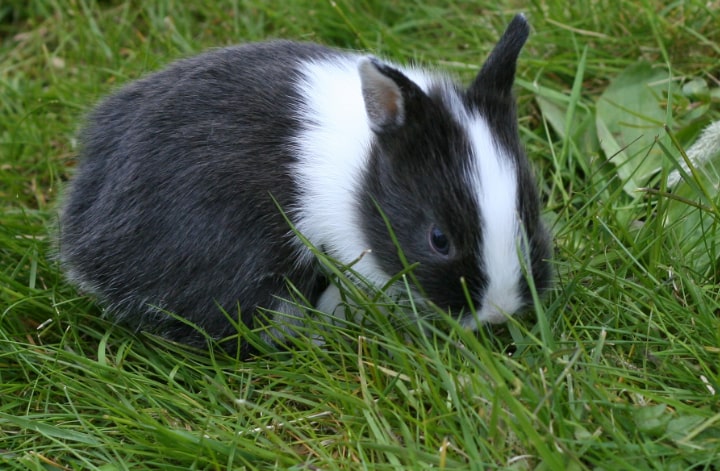
At the end of the day, allowing your rabbits to forage its surrounding ensures your rabbit is healthy and happy. You don’t want the cage to get in the way of that. Same approach as for chickens, really.
Now over to you.
Do you have a rabbit or are you planning to raise rabbits? Drop us a comment and tell us about it.
And, if you found this article useful, please share it with your friends. We appreciate your support!

Leave a Reply